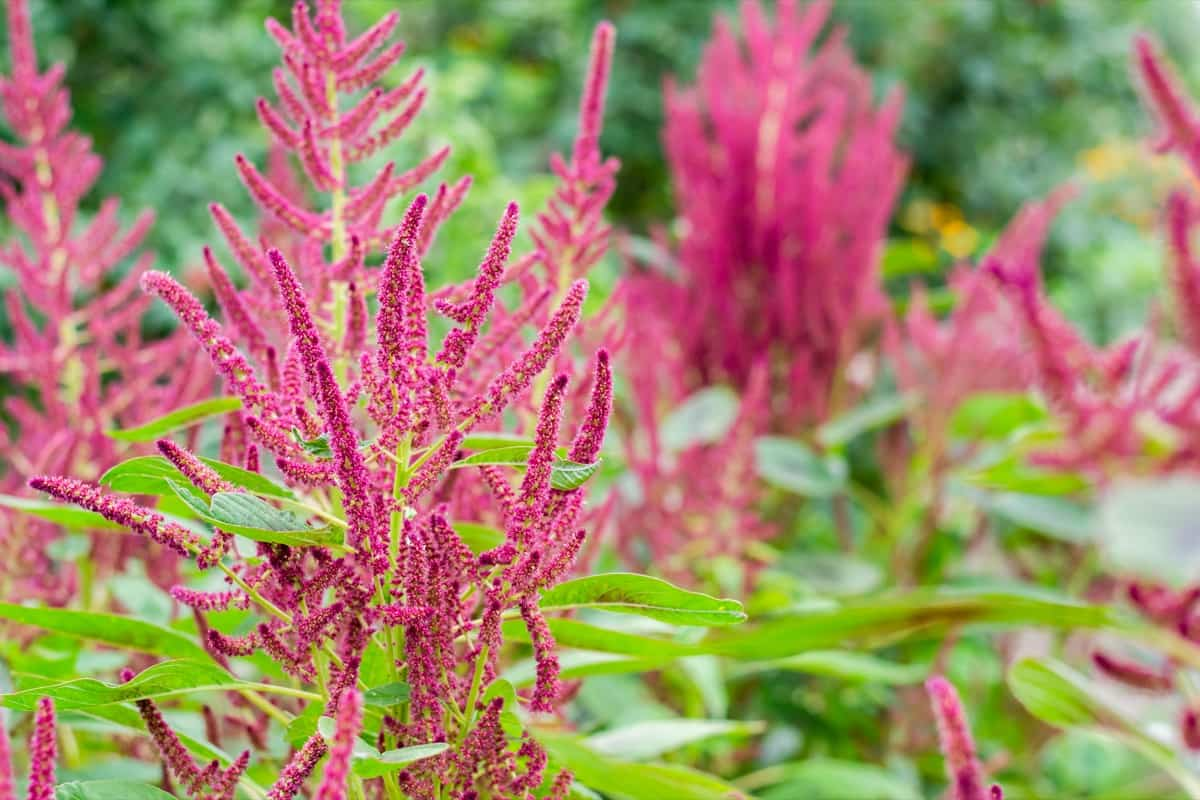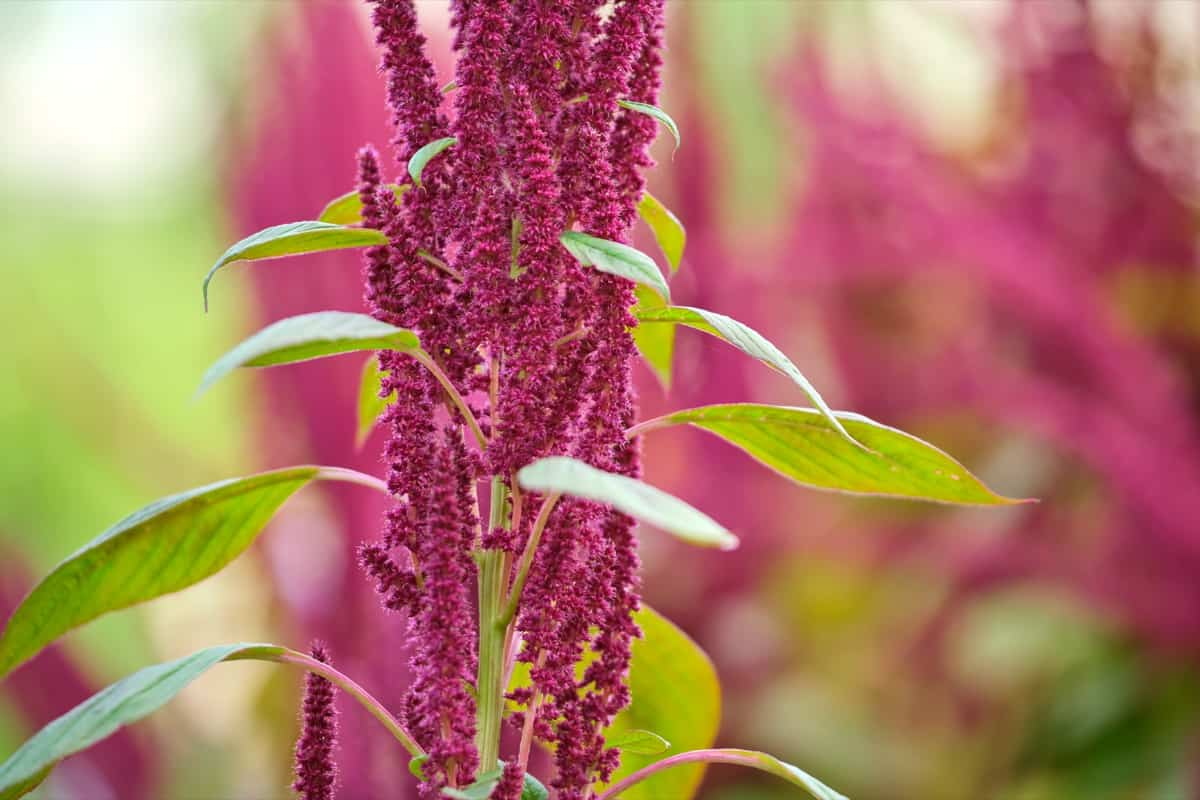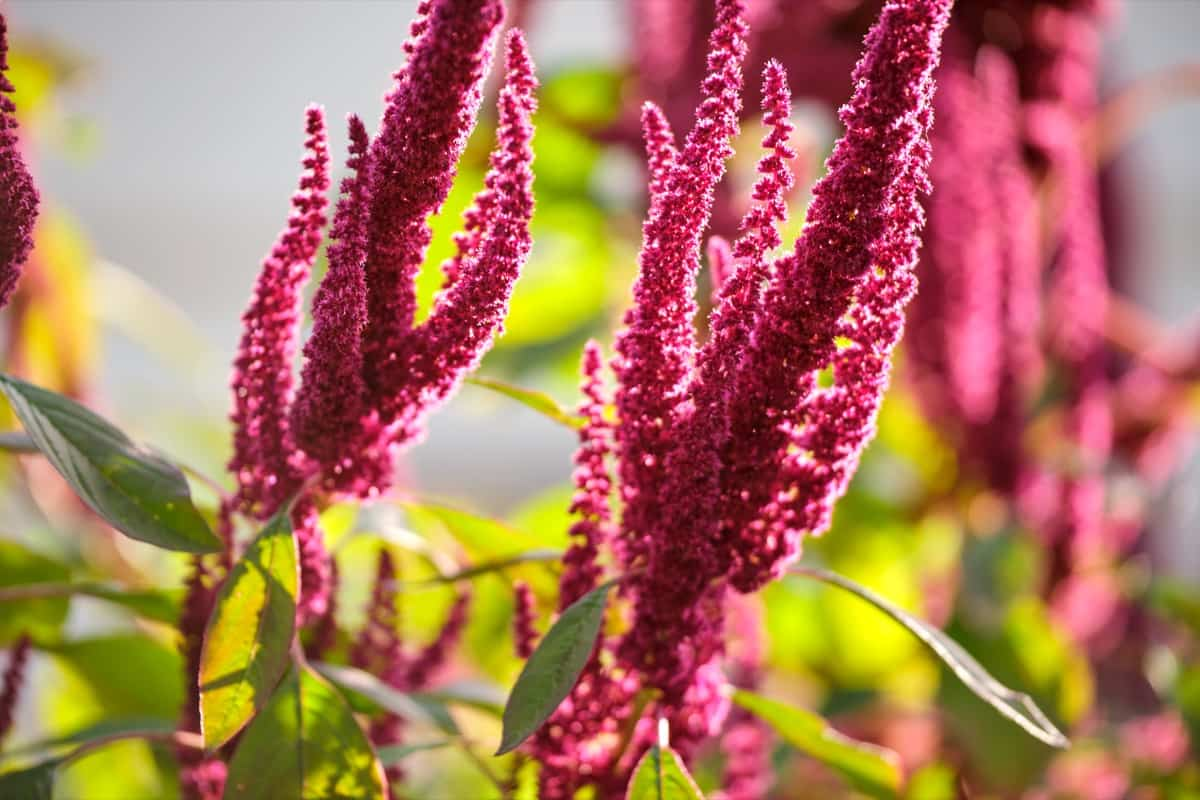Amaranth plants, known for their vibrant foliage and nutritious seeds, are popular among gardeners and farmers. However, like other plants, they can face various problems hindering their growth and productivity. This document will explore common problems with amaranth plants and provide effective treatment and solutions for each issue.

9 Common Problems With Amaranth Plants
Preventing Amaranth Powdery Mildew: Effective Control Methods
Powdery mildew is caused by various species of fungi belonging to the order Erysiphales. Powdery mildew is a common fungus-caused disease that affects amaranth. Symptoms of Powdery mildew white or grayish powdery patches on the upper surfaces of leaves stems, and sometimes flowers.
Chemical Control of Powdery Mildew: Chemical control is one of the most commonly used methods to manage powdery mildew in amaranth crops. The most effective fungicides against powdery mildew in amaranth crops include sulfur-based products, such as wettable sulfur and dusting sulfur.
Powdery Mildew Biological Control: One effective biological control method is using bio fungicides formulated with beneficial microorganisms. These microorganisms, such as Bacillus subtilis or Trichoderma species, can compete with the powdery mildew for resources and space, preventing its establishment and growth.
Powdery mildew prevention: Preventing powdery mildew is always better than trying to control it once it has been established. Fertilization: Maintain proper nutrient balance in the soil, as excessive nitrogen can promote powdery mildew growth. Follow recommended fertilization practices for amaranth crops.
Dealing With Yellowing Leaves on Amaranth Plants: Causes and Remedies
The yellowing of leaves on Amaranth plants is due to a lack of essential nutrients. Yellowing of leaves due to deficiency of nitrogen, iron, or magnesium, the leaves may start to turn yellow. For nitrogen Deficiency, ammonium nitrate or urea can be applied to the soil. To address magnesium deficiency, apply magnesium sulfate.
Another potential cause of yellowing leaves is overwatering or poor drainage. Start by examining the leaves that are turning yellow. Amaranth plants prefer well-drained soil, and excessive moisture can lead to root rot and nutrient imbalances, resulting in yellow leaves. Ensure the plants are not in waterlogged soil and adjust watering practices to treat yellowing leaves effectively.
Controlling Aphid Infestations on Amaranth Plants Naturally
To Get Rid of Aphids Permanently
- Neem Oil: Dilute neem oil according to the manufacturer’s instructions and spray it on the amaranth plants. Neem oil is an organic insecticide that disrupts the aphids’ life cycle.
- Insecticidal soap: Insecticidal soap can be an effective and natural solution for aphid control. Spray the solution directly onto the affected amaranth plants, covering both sides of the leaves. Repeat this process every few days until the aphids are gone.
- Encourage beneficial insects in your garden, such as ladybugs, lacewings, and parasitic wasps, for aphid control. Planting flowers like marigolds and yarrow can attract these beneficial insects to your garden.
Identifying and Treating Stem Rot in Amaranth Plants
Identification
- Infected stems may exhibit dark brown or black discoloration, often starting at the base and progressing upwards.
- Affected plants may show wilting or drooping leaves, despite adequate watering.
- The stem may become soft and mushy, with a foul odor.
Treatment
- To prevent the spread of the disease, promptly remove and destroy all infected plants. Do not compost infected plant material, as it can harbor fungal spores.
- Thiophanate-methyl is known for its efficacy against Sclerotinia spp.; this fungicide can effectively manage stem rot in amaranth plants. Apply as directed on the product label.
In case you missed it: Hydroponic Amaranthus Farming in a Greenhouse: Key Rules to Start from Scratch

Managing Nutrient Deficiencies in Amaranth Plants
- A nitrogen deficiency in amaranth plants can be identified by pale yellow leaves, stunted growth, and reduced vigor.
- Symptoms of phosphorus deficiency in amaranth plants include purplish leaves, delayed maturity, and poor flowering.
- Signs of potassium deficiency in amaranth plants include yellowing or browning leaf edges, weak stems, and reduced fruit production.
- Magnesium deficiency can result in yellowing between the veins of older leaves while the leaf veins remain green.
| Nutrient Deficiency | Solution |
| Nitrogen | Compost or well-aged animal manure |
| Phosphorus | Bone meal or rock phosphate or ammonium sulfate, or urea |
| Potassium | Potassium sulfate or potassium chloride, |
| Magnesium | Magnesium sulfate or dolomitic lime |
Preventing Amaranth Plants From Wilting and Drooping
- Ensure that the soil around the plants is moist but not soggy. Water your amaranth plants regularly, especially during dry spells or hot weather.
- Applying an organic mulch around the plant’s base can retain moisture in the soil, prevent weed growth, and regulate soil temperature.
- Regularly fertilize the plants with a balanced fertilizer to provide nutrients like nitrogen, phosphorus, and potassium.
- Ensure that your plants receive adequate sunlight, as insufficient light can weaken the plants and lead to wilting. If your plants are in a shaded area, consider moving them to a sunnier location.
Identifying and Treating Leaf Spot Diseases in Amaranth Plants
Fungal pathogens are a common cause of leaf spot diseases in amaranth plants. Notable examples include Alternaria spp., Cercospora spp., and Colletotrichum spp. These fungi grow in warm and humid conditions, making amaranth plants highly susceptible to infection. Leaf spots caused by fungal or bacterial pathogens often exhibit circular or irregular shapes.
These spots may vary in color, ranging from brown, black, or gray to tan. As leaf spot diseases progress, affected leaves may exhibit yellowing or wilting symptoms. This can lead to premature leaf drop, reducing plant vigor and yield. Chlorothalonil-based fungicides have proven efficacy against various fungal pathogens, including those causing leaf spot diseases in amaranth plants.
Managing Excessive Growth and Crowding in Amaranth Plants
Ensure adequate spacing during planting. Providing sufficient space between individual plants allows for proper air circulation and prevents overcrowding, which can spread diseases and inhibit growth. Maintaining a spacing of approximately 12-18 inches between plants is recommended, depending on the specific variety and growth habit.
Proper fertilization and nutrient management are crucial in managing excessive growth in amaranth plants. Excessive nitrogen-rich fertilizers can stimulate vegetative growth, leading to overcrowding. Regular soil testing can guide the appropriate application of fertilizers and ensure optimal nutrient levels for amaranth plants.
Dealing With Amaranth Plants Not Producing Seeds
- Attract Pollinators: Plant companion flowers such as marigolds, zinnias, or bee-friendly plants nearby to attract pollinators like bees and butterflies to your garden.
- Choose The Right Variety: Opt for amaranth varieties more suited to your climate. Some varieties are more tolerant of adverse weather conditions and are more likely to produce seeds under challenging environmental circumstances.
- Thinning: If your amaranth plants are already overcrowded, consider thinning them by removing excess plants. This will allow the remaining plants to receive adequate sunlight, nutrients, and space to develop seeds.
In case you missed it: 1-Acre Project Report of Amaranth Millet/Grain Farming: Production Economics, Cultivation Cost and Profit

Conclusion
By addressing these common problems and implementing the suggested treatments and solutions, you can ensure the health and vitality of your amaranth plants. With proper care, your amaranth plants will thrive, providing a bountiful harvest and a beautiful addition to your garden or farm.
- Feed Your Flock for Less: Top 10 Tips to Save on Chicken Feed
- Ultimate Guide to Ossabaw Island Hog: Breeding, Raising, Diet, and Care
- Hatching Answers: The Top 10 Reasons Your Chickens Aren’t Laying Eggs
- Eggs and Economics: Breaking Down the Cost of Raising Backyard Chickens
- Defend Your Greens: Proven Methods to Keep Iguanas Out of Your Garden
- Ultimate Guide to Cinnamon Queen Chicken: A Comprehensive Guide for Beginners
- Ultimate Guide to California Tan Chicken: Breeding, Raising, Diet, Egg-Production and Care
- Ultimate Guide to Marsh Daisy Chicken: Breeding, Raising, Diet, and Care
- 10 Types of Chicken Farming Businesses You Can Start for Profits